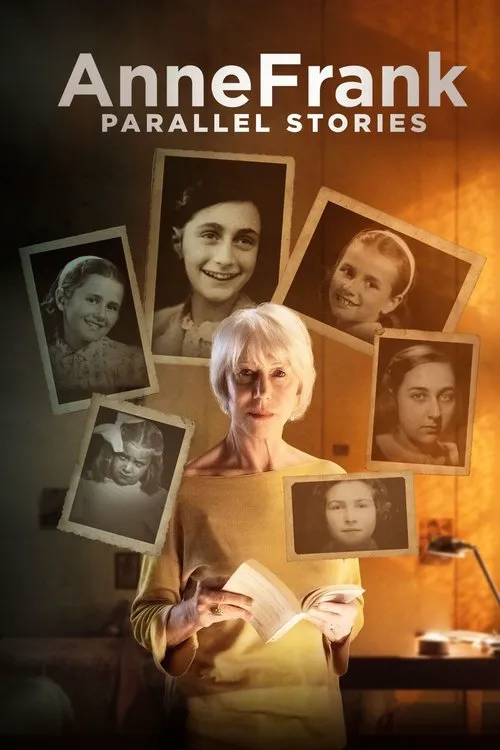#AnneFrank. Parallel Stories

Trama
The movie begins with a reflection on the significance of Anne Frank's story, as Primo Levi's words set the tone for the film. Helen Mirren's introduction provides context and foreshadows the powerful storytelling that follows. The story then shifts to Anne Frank's narrative, brought to life through the pages of her diary. Viewers are transported to a meticulously recreated version of Anne's secret refuge in Amsterdam, where the 13-year-old writer pours her heart and soul onto the pages of her diary. As the camera pans through the small, cluttered space, we are immersed in the world Anne created for herself and her family. The reconstructed room, designed by the Piccolo Theatre in Milan, is a testament to the meticulous attention to detail that has gone into the production. Every object, every book, and every piece of furniture has been carefully placed to recreate the atmosphere of the period. The camera focuses on Anne's desk, where her diary lies open, revealing the thoughts and feelings of a teenager confined to a secret space. We hear her voice, her laughter, and her pain, as she writes about her hopes, dreams, and fears. The diary entries provide an intimate glimpse into Anne's inner world, as she navigates the complexities of adolescence while living in hiding. As the film progresses, the story of Anne's life is intertwined with that of five Holocaust survivors, teenage girls who share similar ideals and desires to live. Their testimonies, alternating with those of their children and grandchildren, provide a powerful counterpoint to Anne's narrative. Arianna Szörenyi, a Hungarian Jewish girl, shares her experiences of living in hiding with her family. Her testimony highlights the resilience of the human spirit, as she and her family survived through sheer determination and luck. Sarah Lichtsztejn-Montard, a French Jewish girl, recounts her experiences in occupied France, where she lost family members and struggled to survive. Her story serves as a reminder of the devastating impact of the Holocaust on individuals and communities. Helga Weiss, an Austrian Jewish girl, shares her haunting and poignant story of survival in a Nazi concentration camp. Her experiences demonstrate the unimaginable cruelty and brutality of the Holocaust, and serve as a stark reminder of the importance of remembering and honoring the victims. The Bucci sisters, Andra and Tatiana, share their story of survival, which highlights the significance of the sisterly bond in times of unimaginable hardship. The testimonies of these five girls, and those of their children and grandchildren, serve as a powerful reminder of the lives that were lost during the Holocaust. Their stories humanize the statistics and provide a face to the tragedy, making it impossible to glance over the atrocities committed. As the film unfolds, we see the parallels between Anne's story and those of the other girls. All share a determination to survive, to live, and to dream. Their voices, though coming from different parts of the world, are united in their expression of hope and resilience in the face of unimaginable danger. Throughout the film, the set design, lighting, and music work together to create a poignant atmosphere, transporting viewers into the world of the characters. The camera work is intimate and sensitive, capturing the emotional depth of the individuals' testimonies. The cinematography highlights the stark contrasts between the secret world of Anne and the reality of the Holocaust, serving as a reminder of the brutal truth. Ultimately, the film serves as a tribute to the power of the human spirit, a reminder that even in the darkest of times, there is always hope. As Primo Levi's words echoed at the beginning, the story of Anne Frank moves us more than countless others, and serves as a testament to the enduring power of her story. The film encourages viewers to reflect on the significance of remembering, and to honor the lives of those who were lost during the Holocaust.
Reseñas
Recomendaciones




